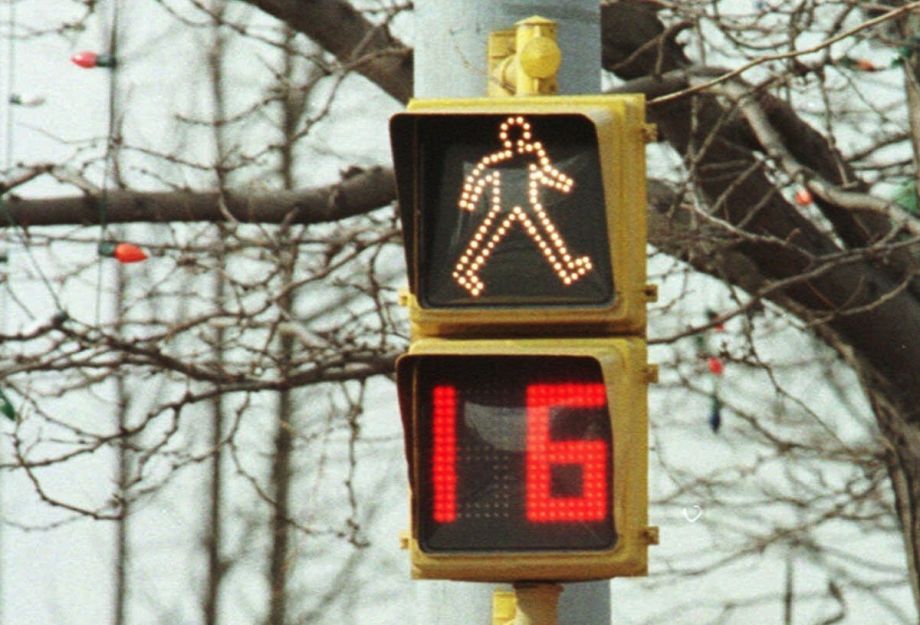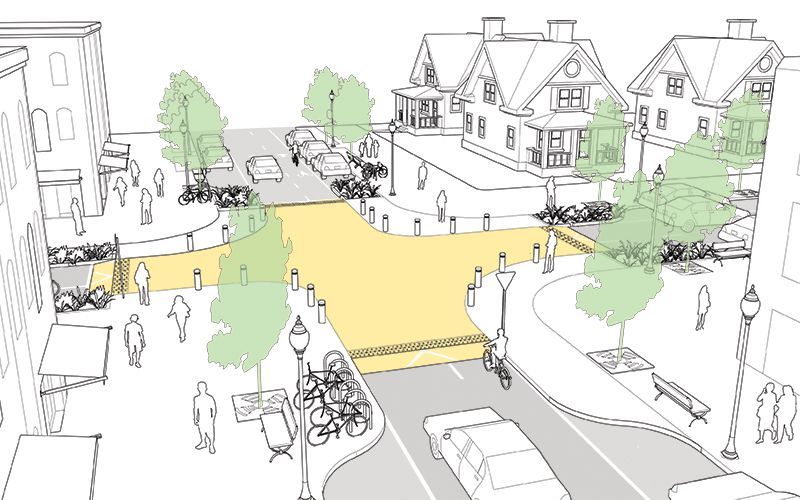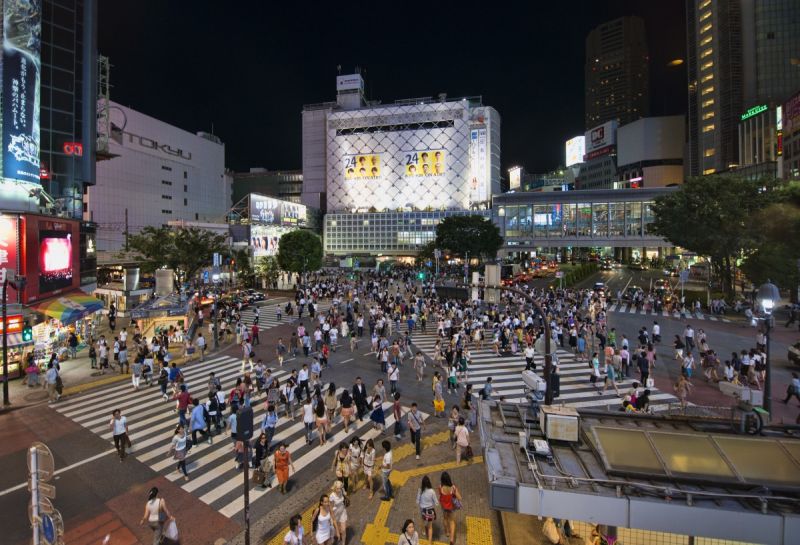BY RACHEL DOVEY | NEXT CITY | OCTOBER 17, 2014
 (AP Photo/Peter Lennihan)
(AP Photo/Peter Lennihan)
Crosswalks and signals are supposed to make walkers safe as they step off the curb, but a tragic example from New York City last month shows that pedestrian infrastructure just isn’t enough when it’s trumped by car-centric intersection design.
On September 25th, a driver turned left from Kenmore Street onto Elizabeth Street in Manhattan and fatally struck 82-year-old Sui Leung. Like almost half of New York walkers that get hit, she was crossing in a crosswalk.
While the motorist may be charged under a new city law(police have yet to declare a verdict), the intersection where Leung was struck will remain dangerous. This is because of something called a “permitted left turn.” Often marked by a “left turn yield on green” sign, it allows drivers to turn left on a regular green, meaning that pedestrians can be crossing at the same time. A study from the Oregon Transportation Research and Education Consortium (OTREC) found that motorists in this kind of intersection watched oncoming cars far more than pedestrians, treating the latter as an “afterthought.”
They take their cue from planners. Between bike lanes that stop suddenly, filtering riders into traffic, and pedestrian signals that run concurrently with fast-turning cars, intersections are too often built first for vehicles; second, third, fourth and 10th for everyone else. But what if they weren’t? What if designers could actually create a modal melting pot that equated walkers with those behind the wheel? Here are some progressive intersection designs that go beyond the turn signal-and-crosswalk formula to really prioritize pedestrian safety, so that those with the least armor don’t become an afterthought.
Protected Left Turns
According to the New York City Department of Transportation, left turns are a leading cause of pedestrian death, outnumbering right-turn crashes 3-1. Meanwhile, the team of researchers with OTREC found that left-turning drivers are especially distracted when they don’t have “protected left turns,” usually marked by a green arrow. And the same general, green-light free-for-all that has them watching the road also allows pedestrians to cross, creating a deadly mix.
That small green arrow, a relatively quick and inexpensive fix, could save lives. But as theOSU team pointed out, making left-turners yield is a potential time-saver, which is no doubt why it’s common practice in many states. According to lead researcher David Hurwitz, however, “[s]ometimes the goal of safety has to override the goal of efficiency, and we think this is one of those times.”
Pedestrian Head Starts
Allowing an interval of pedestrian walk time before motorists’ signal change is another relatively easy adjustment. It gives walkers a head start while also reducing “conflicts between pedestrians and turning vehicles and makes crossing pedestrians more visible,” according to America Walks. Safe Routes to School suggests “No Turn on Red” signs to accompany the modified signal timing, creating a brief walkers-only zone in the crosswalk.
Raised Crossings and Intersections
These speed-bump-like platforms ramp up crosswalks or even whole intersections. The latter, according to the UNC’s Highway Safety Research Center is “essentially a speed table for the entire intersection.” The infrastructure works two ways: It literally boosts pedestrians in the motorist’s perspective by making them taller and it also slows cars down. One intersection in Phoenix, Arizona, has “bollards” (permanent cement traffic cones) around the sidewalks, which are level with the raised-up streets.
 A raised intersection (Source: NACTO.org)
A raised intersection (Source: NACTO.org)
Neckdowns
Neckdowns extend the curb out into the intersection (thus their less poetic term, curb extensions), contracting the amount of street space pedestrians have to cross. According to the Project for Public Spaces, they increase safety for slower pedestrians, like small children and the elderly. Because curbs are usually built in a large bulb shape, they also slow turning drivers down, according to the Federal Highway Administration.
 A curb extension (Source: PedBikeSafe.org)
A curb extension (Source: PedBikeSafe.org)
Protected Intersections
Designed to extend protected bike lanes into the intersection, these crossings benefit pedestrians too. Alta Planning + Design’s Nick Falbo modeled the blueprints on Dutch infrastructure, so of course they prioritize walkers and bikers. One key design element is the “corner refuge island,” which is a bit like a neckdown but with a bike lane running through its center. This island forces drivers to turn a full 90 degrees before hitting a crosswalk when making a right turn and makes the intersection smaller overall, shrinking the distance pedestrians, as well as bikers, have to traverse.
 The protected intersection (Source: ProtectedIntersection.com)
The protected intersection (Source: ProtectedIntersection.com)
The Barnes Dance
Named for traffic engineer Henry Barnes, not a do-si-do, the Barnes Dance (also called a pedestrian scramble) restricts right turns on red, and turns the whole intersection into a walkers-only zone for the length of a long signal. In a Chicago pilot begun in 2013, drivers wait for 35 seconds according to CBS. Crosswalks are often put in the shape of an X through the middle, as well as along the four corners, to designate that walkers can cross diagonally.
 A pedestrian scramble in Tokyo (Photo by Chensiyuan)
A pedestrian scramble in Tokyo (Photo by Chensiyuan)
The Works is made possible with the support of the Surdna Foundation.